
by Ria Olivier | Aug 12, 2025 | Announcement, Ecology, Environment, Invasion Biology, Jobs, Marion Island, Mice Eradication, Microbiology, Research
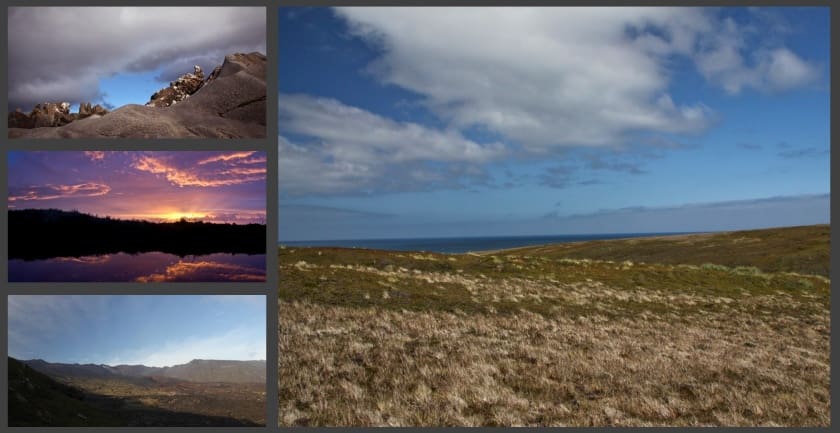 Postdoctoral Fellowship: Understanding Mouse Impacts on Sub-Antarctic Marion Island at Department of Plant and Soil Sciences, University of Pretoria. (image: Otto Whitehead)
Postdoctoral Fellowship: Understanding Mouse Impacts on Sub-Antarctic Marion Island at Department of Plant and Soil Sciences, University of Pretoria. (image: Otto Whitehead)
An exciting postdoctoral fellowship is offered on our South African National Antarctic Programme project “Towards a comprehensive understanding of impacts of the invasive house mouse on the terrestrial biodiversity of Marion Island”. Sub-Antarctic Marion Island is one of the most isolated landmasses globally. The house mouse invaded the island in the early 1800s, and its impacts are manifold, and intensifying under climate change. This project aims to fill gaps in understanding mouse impacts on the island, with the purpose of informing the planned mouse eradication. This position will provide exciting opportunities to work on excellent long-term and/or spatially well-sampled datasets and inform island management.
Full Details and Advertisement
Additionally, opportunities to collaborate locally and internationally exist within this project. We are looking for a candidate with expertise in one or several of the following, or related fields: community ecology, isotope ecology, entomology, botany, trait ecology; or with an ability to learn the necessary skills. Their primary responsibility will be conducting and leading research into one or several of these themes. Opportunities for student supervision and teaching also exist.
Closing Date : 29 August 2025

by Ria Olivier | Jun 1, 2025 | Antarctica, Commemorative Days, Current Event, Ecology, Environment, Gough Island, Marion Island
June is Environment Month under the theme “Think, Eat, Save and reduce your foodprint”
 June marks National Environment Month in South Africa — a time for reflection, awareness, and action toward safeguarding our natural world. Spearheaded by the Department of Forestry, Fisheries and the Environment (DFFE), this month-long observance highlights the importance of environmental stewardship and calls on all citizens to contribute to a more sustainable future. Central to these celebrations are two globally recognised days: World Environment Day on June 5th and World Oceans Day on June 8th, both of which resonate strongly with the mission and work of the South African National Antarctic Programme (SANAP).
June marks National Environment Month in South Africa — a time for reflection, awareness, and action toward safeguarding our natural world. Spearheaded by the Department of Forestry, Fisheries and the Environment (DFFE), this month-long observance highlights the importance of environmental stewardship and calls on all citizens to contribute to a more sustainable future. Central to these celebrations are two globally recognised days: World Environment Day on June 5th and World Oceans Day on June 8th, both of which resonate strongly with the mission and work of the South African National Antarctic Programme (SANAP).
 As South Africa’s gateway to the Southern Ocean and Antarctica, SANAP plays a vital role in environmental research and conservation in some of the planet’s most fragile and remote ecosystems — including Antarctica, Marion Island, and Gough Island. During Environment Month, SANAP takes pride in celebrating the unique natural heritage of these sub-Antarctic and Antarctic regions, where pristine ecosystems offer critical insight into global environmental changes.
As South Africa’s gateway to the Southern Ocean and Antarctica, SANAP plays a vital role in environmental research and conservation in some of the planet’s most fragile and remote ecosystems — including Antarctica, Marion Island, and Gough Island. During Environment Month, SANAP takes pride in celebrating the unique natural heritage of these sub-Antarctic and Antarctic regions, where pristine ecosystems offer critical insight into global environmental changes.

 Marion Island, in particular, stands out as a hub of scientific activity. Home to one of SANAP’s permanent research stations, the island has been central to decades of biological and environmental studies. Its long-term monitoring programmes have produced a wealth of scientific papers and post-graduate research, offering rare and invaluable data on biodiversity, ecosystem dynamics, and the far-reaching impacts of climate change. These efforts are not only advancing global understanding of environmental shifts but also reinforcing South Africa’s commitment to science-based conservation.
Marion Island, in particular, stands out as a hub of scientific activity. Home to one of SANAP’s permanent research stations, the island has been central to decades of biological and environmental studies. Its long-term monitoring programmes have produced a wealth of scientific papers and post-graduate research, offering rare and invaluable data on biodiversity, ecosystem dynamics, and the far-reaching impacts of climate change. These efforts are not only advancing global understanding of environmental shifts but also reinforcing South Africa’s commitment to science-based conservation.
This Environment Month, as we reflect on our role in protecting the planet, we honour the scientists, support and teams of SANAP who dedicate their work to safeguarding the southernmost reaches of our world. Their ongoing research ensures that we remain informed and equipped to make decisions that protect our environment — for generations to come.

by Ria Olivier | Dec 23, 2024 | Biosecurity, Ecology, Jobs, Marine Protected Area, Marion Island
Vacancy for field researcher on Marion Island
(March 2025 – May 2026)
Mouse impacts on invertebrates and plants
 The Department of Plant and Soil Sciences at the University of Pretoria is offering one suitably qualified candidate an opportunity to spend a year on Marion Island to measure various aspects of the impact of the house mouse on the diversity and function of the terrestrial ecosystems of Marion Island. This work will entail collecting baseline data, mostly on invertebrates and plants. (Photo Credit: Michelle Greve)
The Department of Plant and Soil Sciences at the University of Pretoria is offering one suitably qualified candidate an opportunity to spend a year on Marion Island to measure various aspects of the impact of the house mouse on the diversity and function of the terrestrial ecosystems of Marion Island. This work will entail collecting baseline data, mostly on invertebrates and plants. (Photo Credit: Michelle Greve)
Collecting invertebrate community data and identifying invertebrates.
Surveying and monitoring vegetation plots. Measuring plant traits.
Mapping species and events.
Installing, maintaining and downloading data from loggers.
Note that duties may change during the course of the year.
FULL DETAILS
Deadline for applications: 10 January 2025

by Ria Olivier | May 11, 2024 | Ecology, International Days, Ornithology
 In 2024, World Migratory Bird Day will be celebrated on two days, 11 May and 12 October, aligning with the cyclic nature of
In 2024, World Migratory Bird Day will be celebrated on two days, 11 May and 12 October, aligning with the cyclic nature of  bird migration in different hemispheres. The World Migratory Bird Day campaign in 2024 will stress the need for proactive conservation measures. This includes reducing the use of pesticides and fertilisers, and where possible, switching to organic farming. Other measures include maintaining and connecting areas of natural vegetation which provide food and shelter for birds and other species, in agricultural landscapes.
bird migration in different hemispheres. The World Migratory Bird Day campaign in 2024 will stress the need for proactive conservation measures. This includes reducing the use of pesticides and fertilisers, and where possible, switching to organic farming. Other measures include maintaining and connecting areas of natural vegetation which provide food and shelter for birds and other species, in agricultural landscapes.

 Pictures of Antarctic Tern taken by Johan Bothma,1968 (left) and John Cooper, 1984 (right
Pictures of Antarctic Tern taken by Johan Bothma,1968 (left) and John Cooper, 1984 (right
“Birds are the most mobile organisms on the planet. Their ability to fly vast distances enables them to exploit predictable, short-term peaks in food availability. Almost one fifth of all birds undertake regular movements, usually tied to seasonal cycles. However, such large-scale movements also incur risks from commuting across the landscape. The balance between these costs and benefits determines who stays and who migrates. Recent studies suggest that migration promotes speciation, principally through the formation of sedentary daughter species” – Peter Ryan & Michelle Vrettos
 The Antarctic Tern’s closest relative is the Arctic Tern and it is likely that they evolved from Arctic Terns that settled in the south. Among other seabirds, it is less clear in which direction the radiation occurred. Species such as gannets and fulmars are not trans-equatorial migrants and so it is more likely that a few stragglers that crossed the equator established new populations in the opposite hemisphere. (article: “Stay or go? – Migration as an evolutionary driver”) (Arctic Tern, most famous for its long-distance migrations. Flying annually between the northern and southern hemispheres)
The Antarctic Tern’s closest relative is the Arctic Tern and it is likely that they evolved from Arctic Terns that settled in the south. Among other seabirds, it is less clear in which direction the radiation occurred. Species such as gannets and fulmars are not trans-equatorial migrants and so it is more likely that a few stragglers that crossed the equator established new populations in the opposite hemisphere. (article: “Stay or go? – Migration as an evolutionary driver”) (Arctic Tern, most famous for its long-distance migrations. Flying annually between the northern and southern hemispheres)
Colour Images by Tom McSherry taken on Gough Island in 2017
All images available on Antarctic Legacy of South Africa archive, contributed by Johan Bothma, John Cooper, Tom McSherry

by Ria Olivier | Apr 24, 2024 | Biosecurity, Ecology, Marion Island, Mice Eradication, Take-Over Operations
The Marion Island mouSe Ecology (MISE) Project: Towards a comprehensive understanding of impacts of the invasive house mouse on the terrestrial biodiversity of Marion Island
 (Above: Azorella selago – left: intact, right: eaten by mice)
(Above: Azorella selago – left: intact, right: eaten by mice)
This SANAP-funded project will set out to model the terrestrial food web on Marion Island, with a specific focus of understanding the role of the the invasive house mouse (Mus musculus), on the biodiversity and ecosystem functioning of Marion Island. The house mouse is an apex terrestrial predator on the island, i.e. it has few to no natural predators, but probably has a major effect on organisms on the island from across the food chain. This exercise is of utmost importance because the house mouse has detrimental effects on a large percentage of species on the island, ranging from seabirds to plants and macroinvertebrates; yet, some of these impacts are not well understood. Also, mouse eradication is planned for Marion Island in 2025. Only if we know what the current impact of mice are on the Marion Island ecosystem, can we predict the efficacy of the eradication..

 (Above: Elmar van Rooyen and Rabia Mathakutha. Left: before departure. Right: On board S.A.Agulhas II with Marion Island in the back)
(Above: Elmar van Rooyen and Rabia Mathakutha. Left: before departure. Right: On board S.A.Agulhas II with Marion Island in the back)
A major aim in the coming year will be to assess plant seed herbivory by mice, to see how this may have affected vegetation dynamics, and how mouse removal may affect vegetation dynamics; and also to understand current levels of invertebrate biomass on Marion Island. Invertebrates make up a major portion of the mouse diet, and repeat sampling since the 1970s has shown successive decreases in biomass. We will also be collecting data for isotope analyses to understand the food web on Marion Island in order to predict knock-on effects of mouse eradication and predict ecosystem recovery. Finally, we will be continuing long-term monitoring programmes of plants and invertebrates that were recently started, and also conduct some repeat sampling of protocols that were conducted some decades ago in order to assess how the system has changed in the last decades.
- Principal Investigator: Michelle Greve
- Affiliation: Department of Plant and Soil Sciences, University of Pretoria
- Research Programme: Towards a comprehensive understanding of impacts of the invasive house mouse on the terrestrial biodiversity of Marion Island
- Participants:
Marion 81 Overwintering Team: Elmar van Rooyen (University of Pretoria – UP)
 Allow me to introduce myself briefly. I am a 29-year-old conservation ecologist with a profound passion for nature and exploration. I hold an M.Sc. degree in Conservation Ecology & Entomology and possess a diverse skill set that includes expertise in ecology, restoration ecology, horticulture, botany, entomology, education, and management. Throughout my career, my focus has predominantly been on Southern Afrotemperate forests, and I have accumulated significant experience in South African forest ecology. I am drawn to this expedition for several reasons. Foremost, the opportunity to explore the unique environment of Marion Island presents a once-in-a-lifetime chance for me to expand my knowledge and understanding of sub-Antarctic ecosystems. While I may not have prior experience with the island, I firmly believe that firsthand experience is the most effective way to comprehend its ecology and wildlife. Moreover, I am deeply committed to the conservation of natural habitats, and Marion Island’s status as a biodiversity hotspot underscores the urgency of our research efforts. The presence of invasive house mice poses a significant threat to the island’s flora and fauna, necessitating thorough investigation and potential eradication strategies. Additionally, I am eager to contribute to studies on the impact of alien plant species and assist in devising methods for their control. I have always had a profound appreciation for fieldwork, and I relish the opportunity to immerse myself in hands-on research once again. Marion Island’s rugged terrain and unique challenges excite me, and I am prepared to tackle them head-on in the pursuit of conservation objectives.
Allow me to introduce myself briefly. I am a 29-year-old conservation ecologist with a profound passion for nature and exploration. I hold an M.Sc. degree in Conservation Ecology & Entomology and possess a diverse skill set that includes expertise in ecology, restoration ecology, horticulture, botany, entomology, education, and management. Throughout my career, my focus has predominantly been on Southern Afrotemperate forests, and I have accumulated significant experience in South African forest ecology. I am drawn to this expedition for several reasons. Foremost, the opportunity to explore the unique environment of Marion Island presents a once-in-a-lifetime chance for me to expand my knowledge and understanding of sub-Antarctic ecosystems. While I may not have prior experience with the island, I firmly believe that firsthand experience is the most effective way to comprehend its ecology and wildlife. Moreover, I am deeply committed to the conservation of natural habitats, and Marion Island’s status as a biodiversity hotspot underscores the urgency of our research efforts. The presence of invasive house mice poses a significant threat to the island’s flora and fauna, necessitating thorough investigation and potential eradication strategies. Additionally, I am eager to contribute to studies on the impact of alien plant species and assist in devising methods for their control. I have always had a profound appreciation for fieldwork, and I relish the opportunity to immerse myself in hands-on research once again. Marion Island’s rugged terrain and unique challenges excite me, and I am prepared to tackle them head-on in the pursuit of conservation objectives.
Marion Takeover 2024: Rabia Mathakutha (South African Polar Research Infrastructure -SAPRI)
 Rabia is excited to participate in the 2024 Marion Island Relief Expedition. Rabia is an ecologist by training and will be working as part of the University of Pretoria research team towards a comprehensive understanding of impacts of the invasive house mouse on the terrestrial biodiversity of Marion Island. Rabia first visited the island as part of her Masters research project during the 2015 and 2016 relief expeditions. Rabia’s MSc in Plant Science was focused on understanding plant invasion potential and environmental change responses in the sub-Antarctic region, using Marion Island as a case study. This is when her passion for understanding and participating in the conservation of South Africa’s polar environment was ignited. In her current capacity, Rabia is a research coordinator for the Data, Products and Society (DPS) Integrated Facility of the South African Polar Research Infrastructure (SAPRI). She continues to support the polar research environment by ensuring coordinated access to research infrastructure and societal benefits through science engagement and science communication. Rabia views this chance to revisit the island as a once-in-a-lifetime opportunity, one that will not only build upon previous efforts in understanding plant dynamics but also advance our understanding of ecological processes in response to a threatening invader. There’s no better place to study this than Marion Island, our own natural laboratory, and where it’s most urgently needed. As part of the larger Mouse-Free Marion project, Rabia considers this as a significant contribution to global conservation efforts, and in her words, “saving the world!”.
Rabia is excited to participate in the 2024 Marion Island Relief Expedition. Rabia is an ecologist by training and will be working as part of the University of Pretoria research team towards a comprehensive understanding of impacts of the invasive house mouse on the terrestrial biodiversity of Marion Island. Rabia first visited the island as part of her Masters research project during the 2015 and 2016 relief expeditions. Rabia’s MSc in Plant Science was focused on understanding plant invasion potential and environmental change responses in the sub-Antarctic region, using Marion Island as a case study. This is when her passion for understanding and participating in the conservation of South Africa’s polar environment was ignited. In her current capacity, Rabia is a research coordinator for the Data, Products and Society (DPS) Integrated Facility of the South African Polar Research Infrastructure (SAPRI). She continues to support the polar research environment by ensuring coordinated access to research infrastructure and societal benefits through science engagement and science communication. Rabia views this chance to revisit the island as a once-in-a-lifetime opportunity, one that will not only build upon previous efforts in understanding plant dynamics but also advance our understanding of ecological processes in response to a threatening invader. There’s no better place to study this than Marion Island, our own natural laboratory, and where it’s most urgently needed. As part of the larger Mouse-Free Marion project, Rabia considers this as a significant contribution to global conservation efforts, and in her words, “saving the world!”.
Text and images by MISE.

by Ria Olivier | Feb 23, 2024 | Biosecurity, Ecology, Environment, Invasion Biology, Marion Island, Research, SANAP, SANAP Student
 Michelle Greve chaired another session on Ecosystems “Major threats to terrestrial sub-Antarctic ecosystems – climate change and invasions” , including how climate and species interactions are driving leaf endophyte communities, how warming directly, and indirectly (through heightened microbial decomposition and nutrient release) affects plant performance) affect plant growth, and how vegetation communities on Marion Island have changed since the 1960s on a warmer, drier and more invaded Marion Island. The session ended with a summary of the knowledge garnered from the National Status Report on Invasions, which includes a chapter on the Prince Edward Islands, and summarised all we know about invasions to the offshore territory.
Michelle Greve chaired another session on Ecosystems “Major threats to terrestrial sub-Antarctic ecosystems – climate change and invasions” , including how climate and species interactions are driving leaf endophyte communities, how warming directly, and indirectly (through heightened microbial decomposition and nutrient release) affects plant performance) affect plant growth, and how vegetation communities on Marion Island have changed since the 1960s on a warmer, drier and more invaded Marion Island. The session ended with a summary of the knowledge garnered from the National Status Report on Invasions, which includes a chapter on the Prince Edward Islands, and summarised all we know about invasions to the offshore territory.  Michelle(right) gave an introduction and then was followed by oral presentations. (Above, l-r: Joshua Tsamba, Michelle Greve, Laura Fernadez-Winzer, Stephni van der Merwe, Nita Pallett) (Photo Credit: Michelle Greve)
Michelle(right) gave an introduction and then was followed by oral presentations. (Above, l-r: Joshua Tsamba, Michelle Greve, Laura Fernadez-Winzer, Stephni van der Merwe, Nita Pallett) (Photo Credit: Michelle Greve)
- Joshua Tsamba – Fungal endophytes on Marion Island. (Abstract)
- Nita Pallett – Sub-Antarctic plant nitrogen uptake in a changing world. (Abstract)
- Stephni van der Merwe – Long-term vegetation change (1965-2020) in response to rapid warming and drying in a sub-Antarctic tundra: evidence from repeat photography (interactive poster) (Abstract)
- Laura Fernandez Winzer – An assessment of the status of biological invasions and their management on the Prince Edward Islands. (Abstract)
 Another student Janine Schoombie of Peter le Roux of University of Pretoria presented in the ad hoc session chaired by Christel Hansen. They only arrived on 30 November after the Prince Edward Island scientific voyage. “Studies of wind, plants and seabirds on Marion Island”. (Abstract) A poster presentation by Elsa van Ginkel , student of Peter le Roux “Examining the potential for entomophilous pollination on sub-Antarctic Marion Island” was mentioned in the ad hoc session.(Abstract) (Above l-r: Peter le Roux, Janine Schoombie, Elsa van Ginkel)
Another student Janine Schoombie of Peter le Roux of University of Pretoria presented in the ad hoc session chaired by Christel Hansen. They only arrived on 30 November after the Prince Edward Island scientific voyage. “Studies of wind, plants and seabirds on Marion Island”. (Abstract) A poster presentation by Elsa van Ginkel , student of Peter le Roux “Examining the potential for entomophilous pollination on sub-Antarctic Marion Island” was mentioned in the ad hoc session.(Abstract) (Above l-r: Peter le Roux, Janine Schoombie, Elsa van Ginkel)
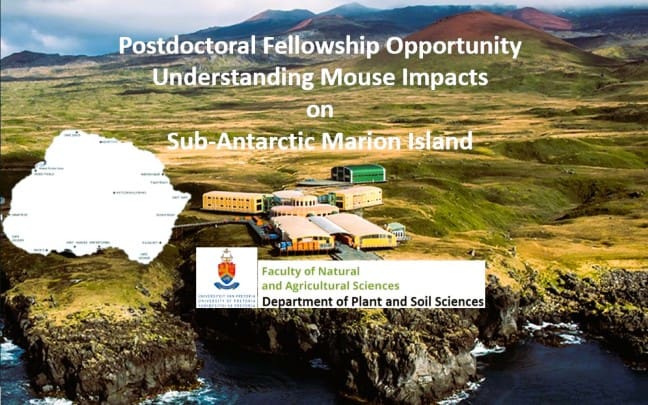
 Postdoctoral Fellowship: Understanding Mouse Impacts on Sub-Antarctic Marion Island at Department of Plant and Soil Sciences, University of Pretoria. (image: Otto Whitehead)
Postdoctoral Fellowship: Understanding Mouse Impacts on Sub-Antarctic Marion Island at Department of Plant and Soil Sciences, University of Pretoria. (image: Otto Whitehead)
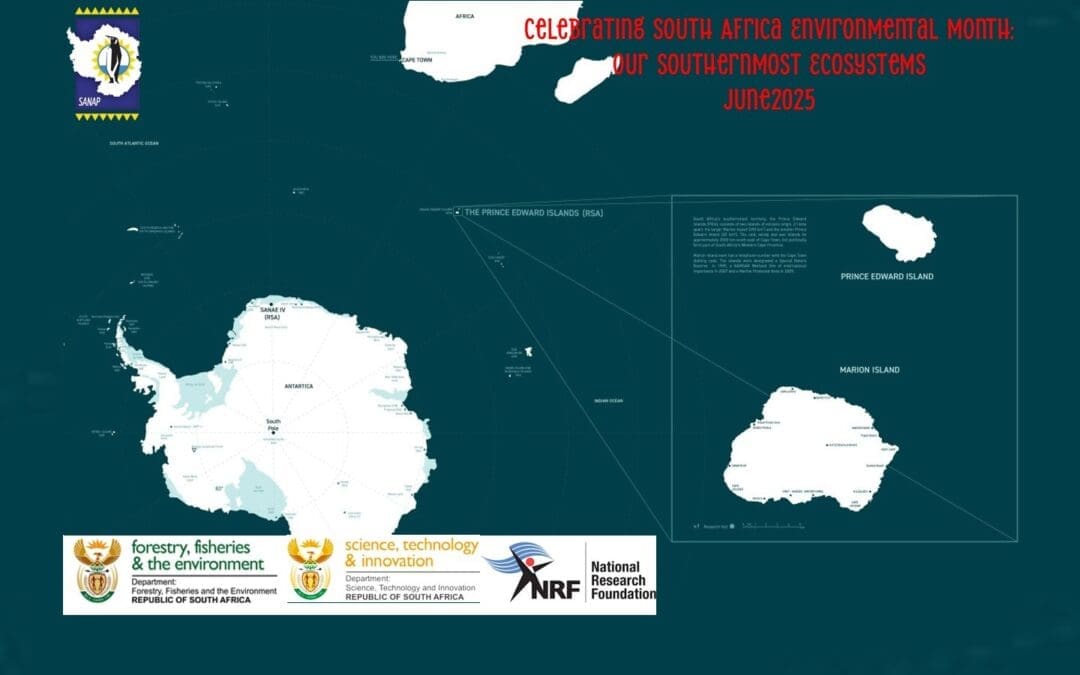
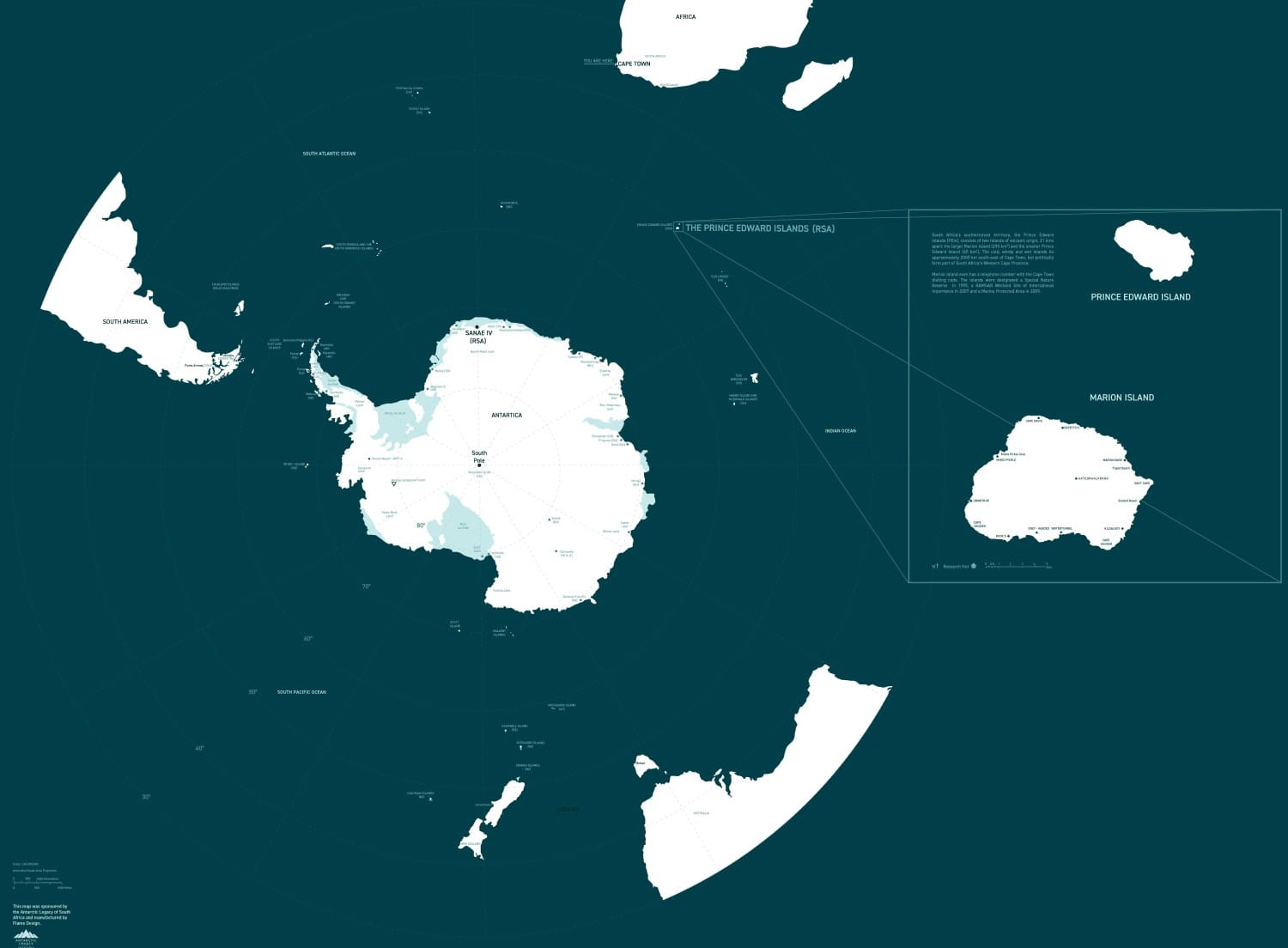 June marks
June marks 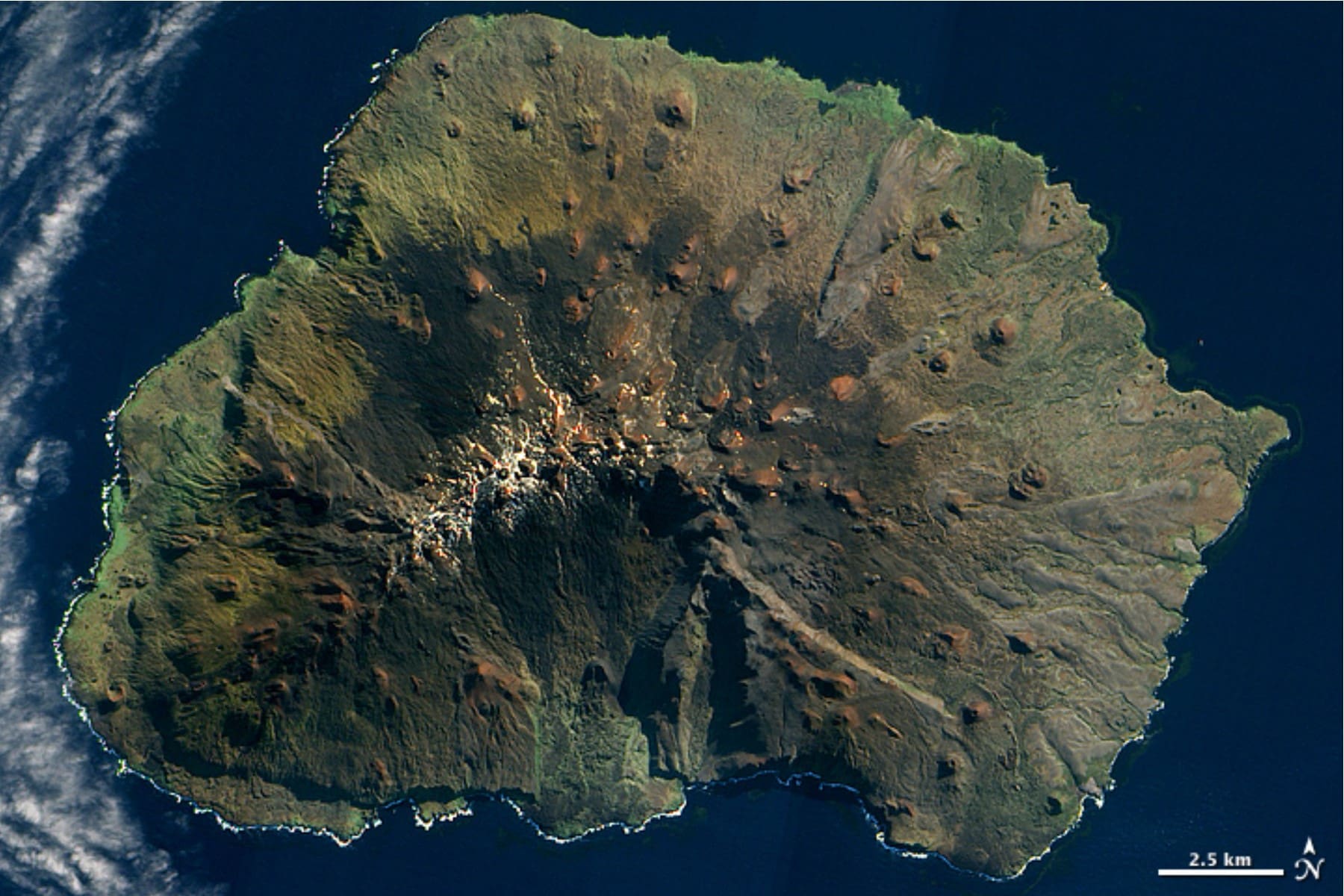
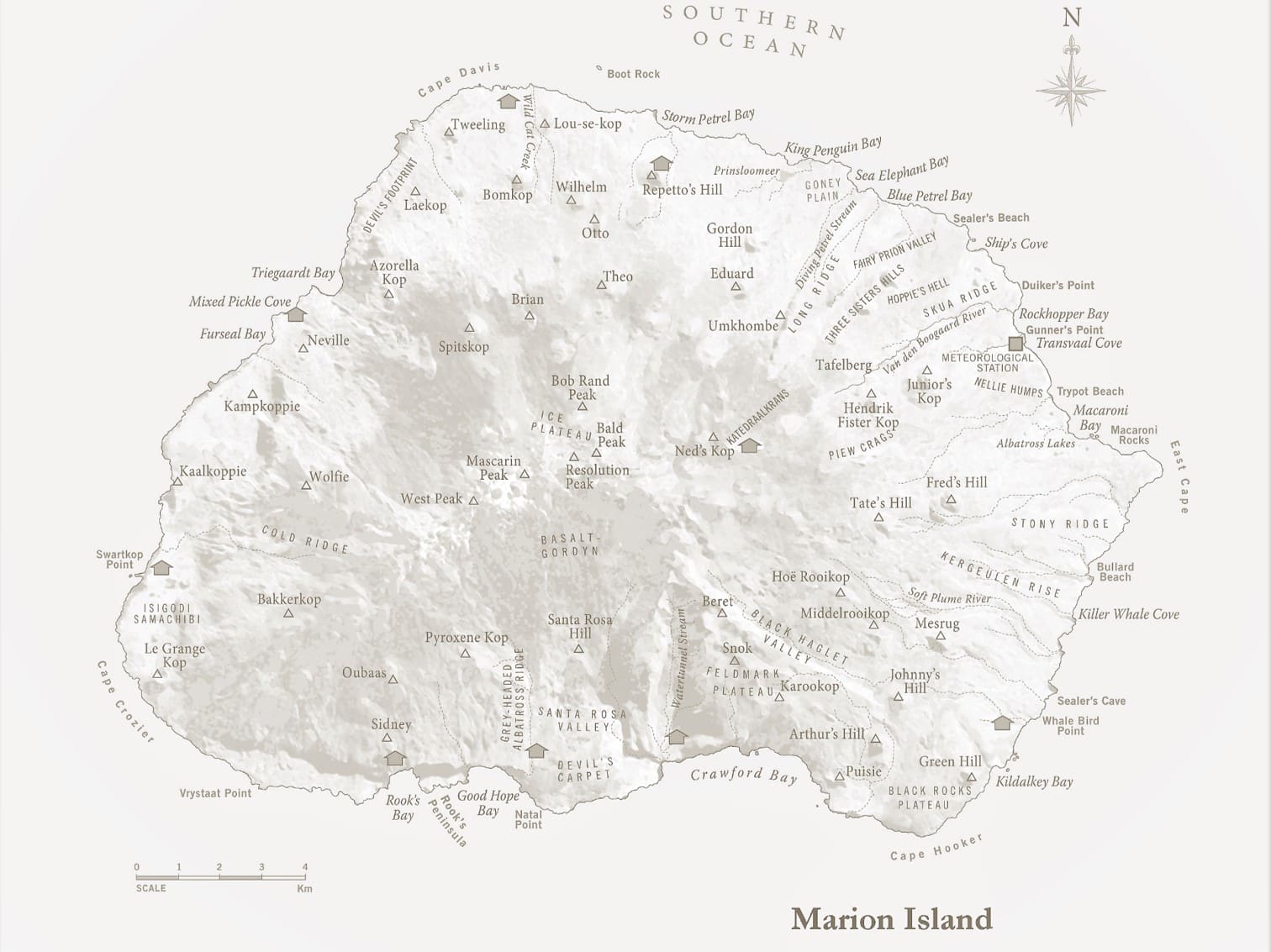 Marion Island, in particular, stands out as a hub of scientific activity. Home to one of SANAP’s permanent research stations, the island has been central to decades of biological and environmental studies. Its long-term monitoring programmes have produced a wealth of scientific papers and post-graduate research, offering rare and invaluable data on biodiversity, ecosystem dynamics, and the far-reaching impacts of climate change. These efforts are not only advancing global understanding of environmental shifts but also reinforcing South Africa’s commitment to science-based conservation.
Marion Island, in particular, stands out as a hub of scientific activity. Home to one of SANAP’s permanent research stations, the island has been central to decades of biological and environmental studies. Its long-term monitoring programmes have produced a wealth of scientific papers and post-graduate research, offering rare and invaluable data on biodiversity, ecosystem dynamics, and the far-reaching impacts of climate change. These efforts are not only advancing global understanding of environmental shifts but also reinforcing South Africa’s commitment to science-based conservation.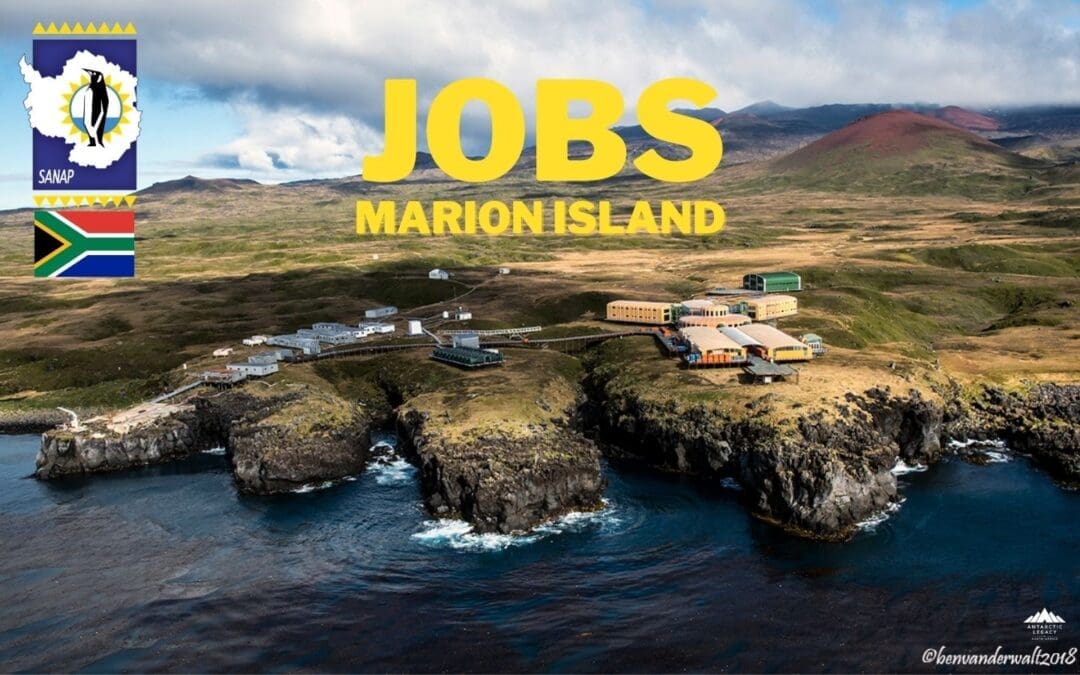
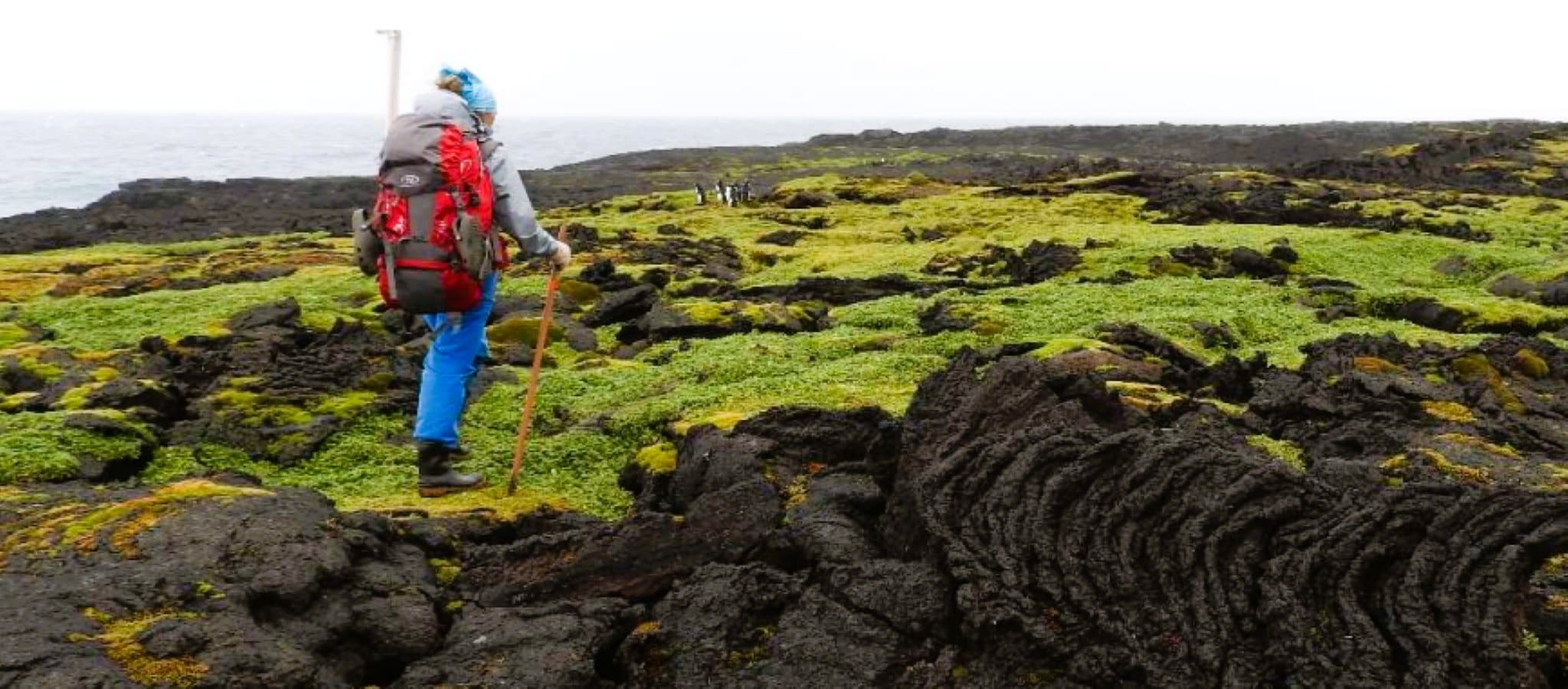 The Department of Plant and Soil Sciences at the University of Pretoria is offering one suitably qualified candidate an opportunity to spend a year on Marion Island to measure various aspects of the impact of the house mouse on the diversity and function of the terrestrial ecosystems of Marion Island. This work will entail collecting baseline data, mostly on invertebrates and plants. (Photo Credit: Michelle Greve)
The Department of Plant and Soil Sciences at the University of Pretoria is offering one suitably qualified candidate an opportunity to spend a year on Marion Island to measure various aspects of the impact of the house mouse on the diversity and function of the terrestrial ecosystems of Marion Island. This work will entail collecting baseline data, mostly on invertebrates and plants. (Photo Credit: Michelle Greve)
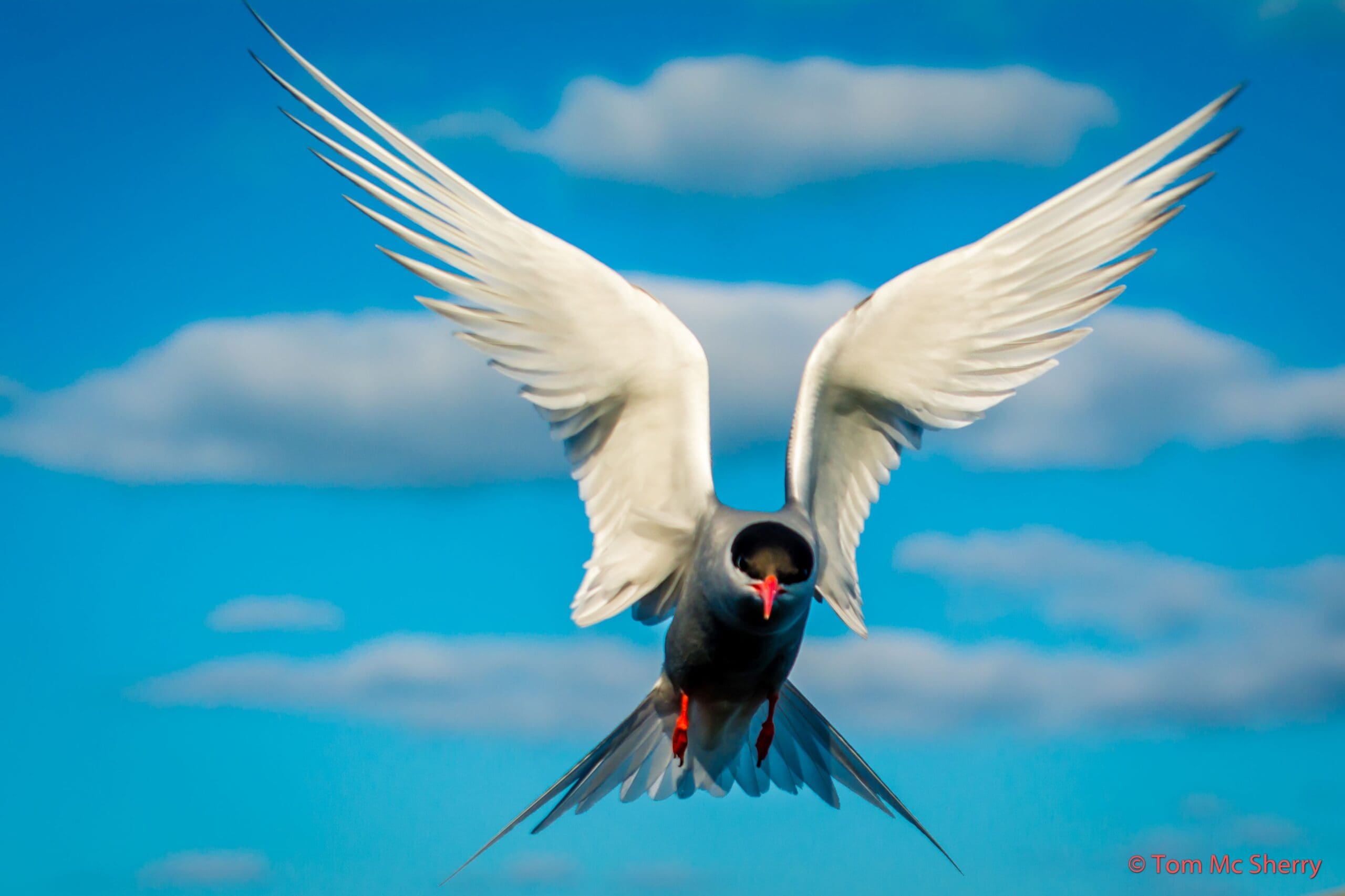 In 2024,
In 2024, 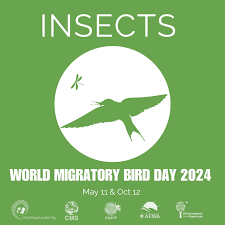 bird migration in different hemispheres. The World Migratory Bird Day campaign in 2024 will stress the need for proactive conservation measures. This includes reducing the use of pesticides and fertilisers, and where possible, switching to organic farming. Other measures include maintaining and connecting areas of natural vegetation which provide food and shelter for birds and other species, in agricultural landscapes.
bird migration in different hemispheres. The World Migratory Bird Day campaign in 2024 will stress the need for proactive conservation measures. This includes reducing the use of pesticides and fertilisers, and where possible, switching to organic farming. Other measures include maintaining and connecting areas of natural vegetation which provide food and shelter for birds and other species, in agricultural landscapes. 
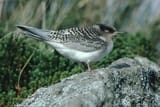 Pictures of Antarctic Tern taken by Johan Bothma,1968 (left) and John Cooper, 1984 (right
Pictures of Antarctic Tern taken by Johan Bothma,1968 (left) and John Cooper, 1984 (right The Antarctic Tern’s closest relative is the Arctic Tern and it is likely that they evolved from Arctic Terns that settled in the south. Among other seabirds, it is less clear in which direction the radiation occurred. Species such as gannets and fulmars are not trans-equatorial migrants and so it is more likely that a few stragglers that crossed the equator established new populations in the opposite hemisphere. (article: “
The Antarctic Tern’s closest relative is the Arctic Tern and it is likely that they evolved from Arctic Terns that settled in the south. Among other seabirds, it is less clear in which direction the radiation occurred. Species such as gannets and fulmars are not trans-equatorial migrants and so it is more likely that a few stragglers that crossed the equator established new populations in the opposite hemisphere. (article: “
 (Above: Azorella selago – left: intact, right: eaten by mice)
(Above: Azorella selago – left: intact, right: eaten by mice)
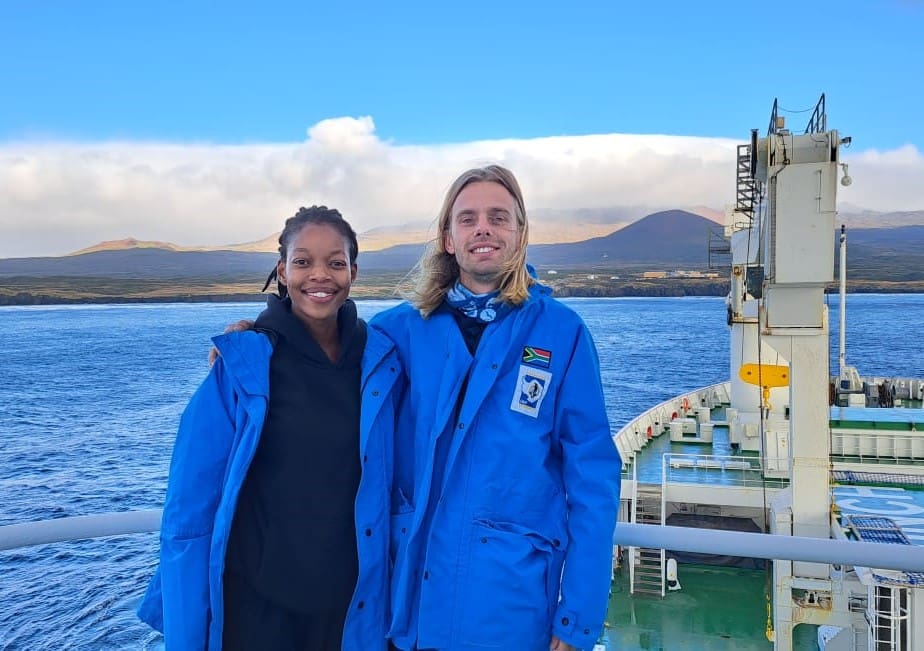 (Above: Elmar van Rooyen and Rabia Mathakutha. Left: before departure. Right: On board S.A.Agulhas II with Marion Island in the back)
(Above: Elmar van Rooyen and Rabia Mathakutha. Left: before departure. Right: On board S.A.Agulhas II with Marion Island in the back)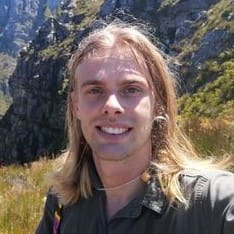 Allow me to introduce myself briefly. I am a 29-year-old conservation ecologist with a profound passion for nature and exploration. I hold an M.Sc. degree in Conservation Ecology & Entomology and possess a diverse skill set that includes expertise in ecology, restoration ecology, horticulture, botany, entomology, education, and management. Throughout my career, my focus has predominantly been on Southern Afrotemperate forests, and I have accumulated significant experience in South African forest ecology. I am drawn to this expedition for several reasons. Foremost, the opportunity to explore the unique environment of Marion Island presents a once-in-a-lifetime chance for me to expand my knowledge and understanding of sub-Antarctic ecosystems. While I may not have prior experience with the island, I firmly believe that firsthand experience is the most effective way to comprehend its ecology and wildlife. Moreover, I am deeply committed to the conservation of natural habitats, and Marion Island’s status as a biodiversity hotspot underscores the urgency of our research efforts. The presence of invasive house mice poses a significant threat to the island’s flora and fauna, necessitating thorough investigation and potential eradication strategies. Additionally, I am eager to contribute to studies on the impact of alien plant species and assist in devising methods for their control. I have always had a profound appreciation for fieldwork, and I relish the opportunity to immerse myself in hands-on research once again. Marion Island’s rugged terrain and unique challenges excite me, and I am prepared to tackle them head-on in the pursuit of conservation objectives.
Allow me to introduce myself briefly. I am a 29-year-old conservation ecologist with a profound passion for nature and exploration. I hold an M.Sc. degree in Conservation Ecology & Entomology and possess a diverse skill set that includes expertise in ecology, restoration ecology, horticulture, botany, entomology, education, and management. Throughout my career, my focus has predominantly been on Southern Afrotemperate forests, and I have accumulated significant experience in South African forest ecology. I am drawn to this expedition for several reasons. Foremost, the opportunity to explore the unique environment of Marion Island presents a once-in-a-lifetime chance for me to expand my knowledge and understanding of sub-Antarctic ecosystems. While I may not have prior experience with the island, I firmly believe that firsthand experience is the most effective way to comprehend its ecology and wildlife. Moreover, I am deeply committed to the conservation of natural habitats, and Marion Island’s status as a biodiversity hotspot underscores the urgency of our research efforts. The presence of invasive house mice poses a significant threat to the island’s flora and fauna, necessitating thorough investigation and potential eradication strategies. Additionally, I am eager to contribute to studies on the impact of alien plant species and assist in devising methods for their control. I have always had a profound appreciation for fieldwork, and I relish the opportunity to immerse myself in hands-on research once again. Marion Island’s rugged terrain and unique challenges excite me, and I am prepared to tackle them head-on in the pursuit of conservation objectives.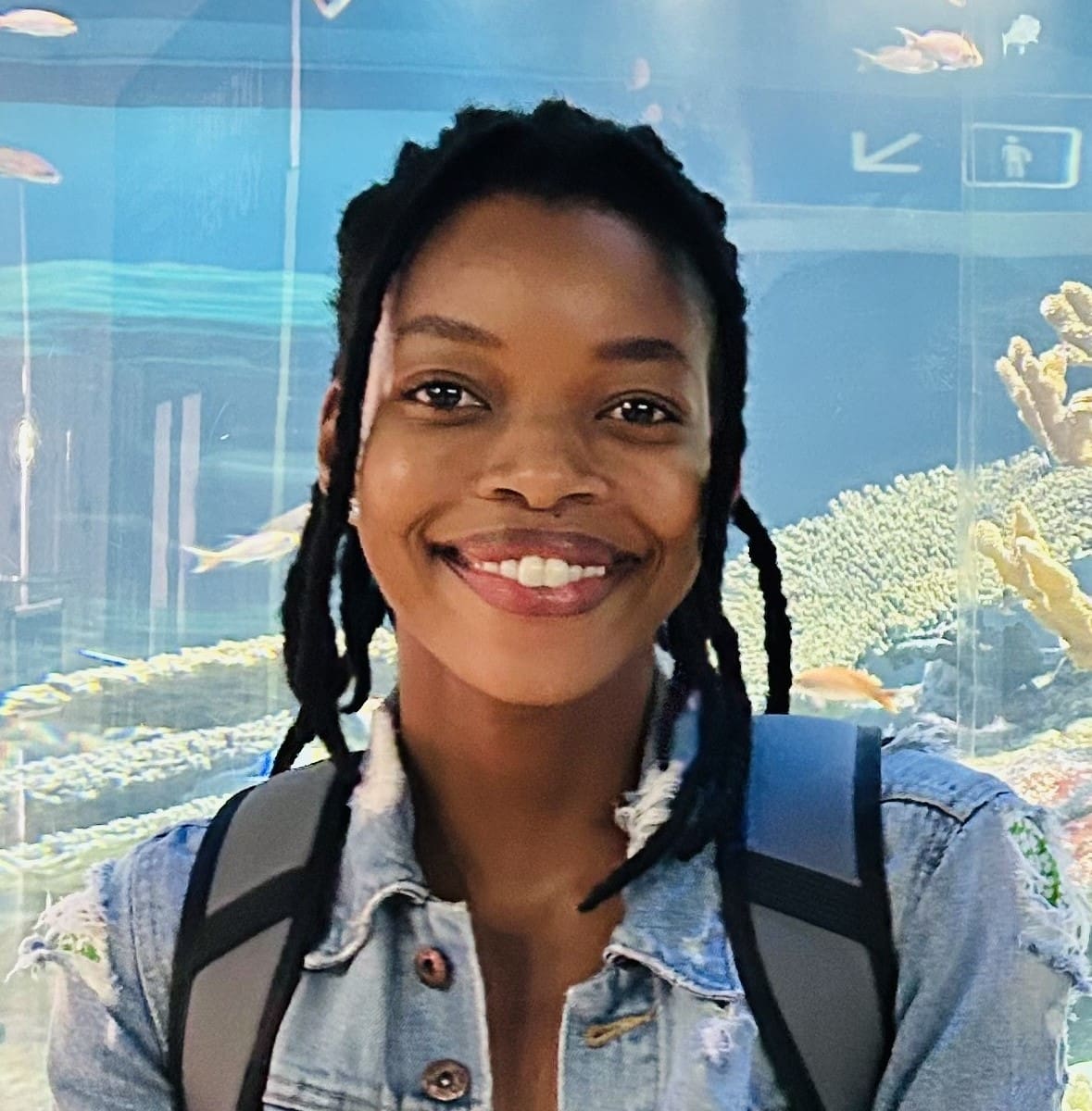 Rabia is excited to participate in the 2024 Marion Island Relief Expedition. Rabia is an ecologist by training and will be working as part of the University of Pretoria research team towards a comprehensive understanding of impacts of the invasive house mouse on the terrestrial biodiversity of Marion Island. Rabia first visited the island as part of her Masters research project during the 2015 and 2016 relief expeditions. Rabia’s MSc in Plant Science was focused on understanding plant invasion potential and environmental change responses in the sub-Antarctic region, using Marion Island as a case study. This is when her passion for understanding and participating in the conservation of South Africa’s polar environment was ignited. In her current capacity, Rabia is a research coordinator for the Data, Products and Society (DPS) Integrated Facility of the South African Polar Research Infrastructure (SAPRI). She continues to support the polar research environment by ensuring coordinated access to research infrastructure and societal benefits through science engagement and science communication. Rabia views this chance to revisit the island as a once-in-a-lifetime opportunity, one that will not only build upon previous efforts in understanding plant dynamics but also advance our understanding of ecological processes in response to a threatening invader. There’s no better place to study this than Marion Island, our own natural laboratory, and where it’s most urgently needed. As part of the larger Mouse-Free Marion project, Rabia considers this as a significant contribution to global conservation efforts, and in her words, “saving the world!”.
Rabia is excited to participate in the 2024 Marion Island Relief Expedition. Rabia is an ecologist by training and will be working as part of the University of Pretoria research team towards a comprehensive understanding of impacts of the invasive house mouse on the terrestrial biodiversity of Marion Island. Rabia first visited the island as part of her Masters research project during the 2015 and 2016 relief expeditions. Rabia’s MSc in Plant Science was focused on understanding plant invasion potential and environmental change responses in the sub-Antarctic region, using Marion Island as a case study. This is when her passion for understanding and participating in the conservation of South Africa’s polar environment was ignited. In her current capacity, Rabia is a research coordinator for the Data, Products and Society (DPS) Integrated Facility of the South African Polar Research Infrastructure (SAPRI). She continues to support the polar research environment by ensuring coordinated access to research infrastructure and societal benefits through science engagement and science communication. Rabia views this chance to revisit the island as a once-in-a-lifetime opportunity, one that will not only build upon previous efforts in understanding plant dynamics but also advance our understanding of ecological processes in response to a threatening invader. There’s no better place to study this than Marion Island, our own natural laboratory, and where it’s most urgently needed. As part of the larger Mouse-Free Marion project, Rabia considers this as a significant contribution to global conservation efforts, and in her words, “saving the world!”.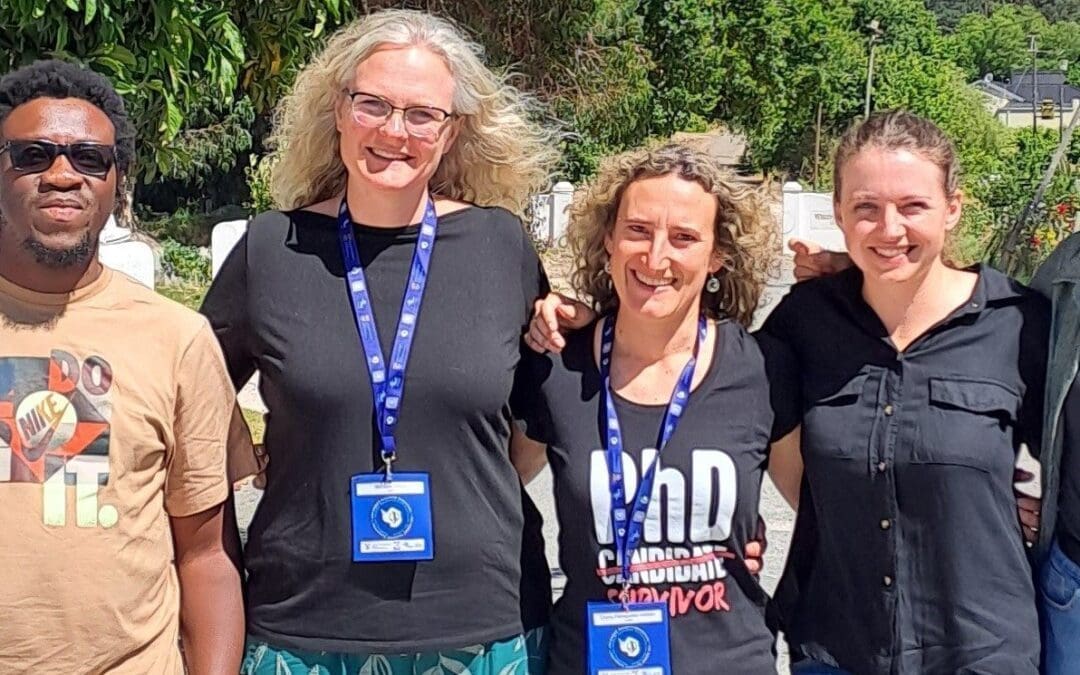
 Michelle Greve chaired another session on Ecosystems “Major threats to terrestrial sub-Antarctic ecosystems – climate change and invasions” , including how climate and species interactions are driving leaf endophyte communities, how warming directly, and indirectly (through heightened microbial decomposition and nutrient release) affects plant performance) affect plant growth, and how vegetation communities on Marion Island have changed since the 1960s on a warmer, drier and more invaded Marion Island. The session ended with a summary of the knowledge garnered from the National Status Report on Invasions, which includes a chapter on the Prince Edward Islands, and summarised all we know about invasions to the offshore territory.
Michelle Greve chaired another session on Ecosystems “Major threats to terrestrial sub-Antarctic ecosystems – climate change and invasions” , including how climate and species interactions are driving leaf endophyte communities, how warming directly, and indirectly (through heightened microbial decomposition and nutrient release) affects plant performance) affect plant growth, and how vegetation communities on Marion Island have changed since the 1960s on a warmer, drier and more invaded Marion Island. The session ended with a summary of the knowledge garnered from the National Status Report on Invasions, which includes a chapter on the Prince Edward Islands, and summarised all we know about invasions to the offshore territory. 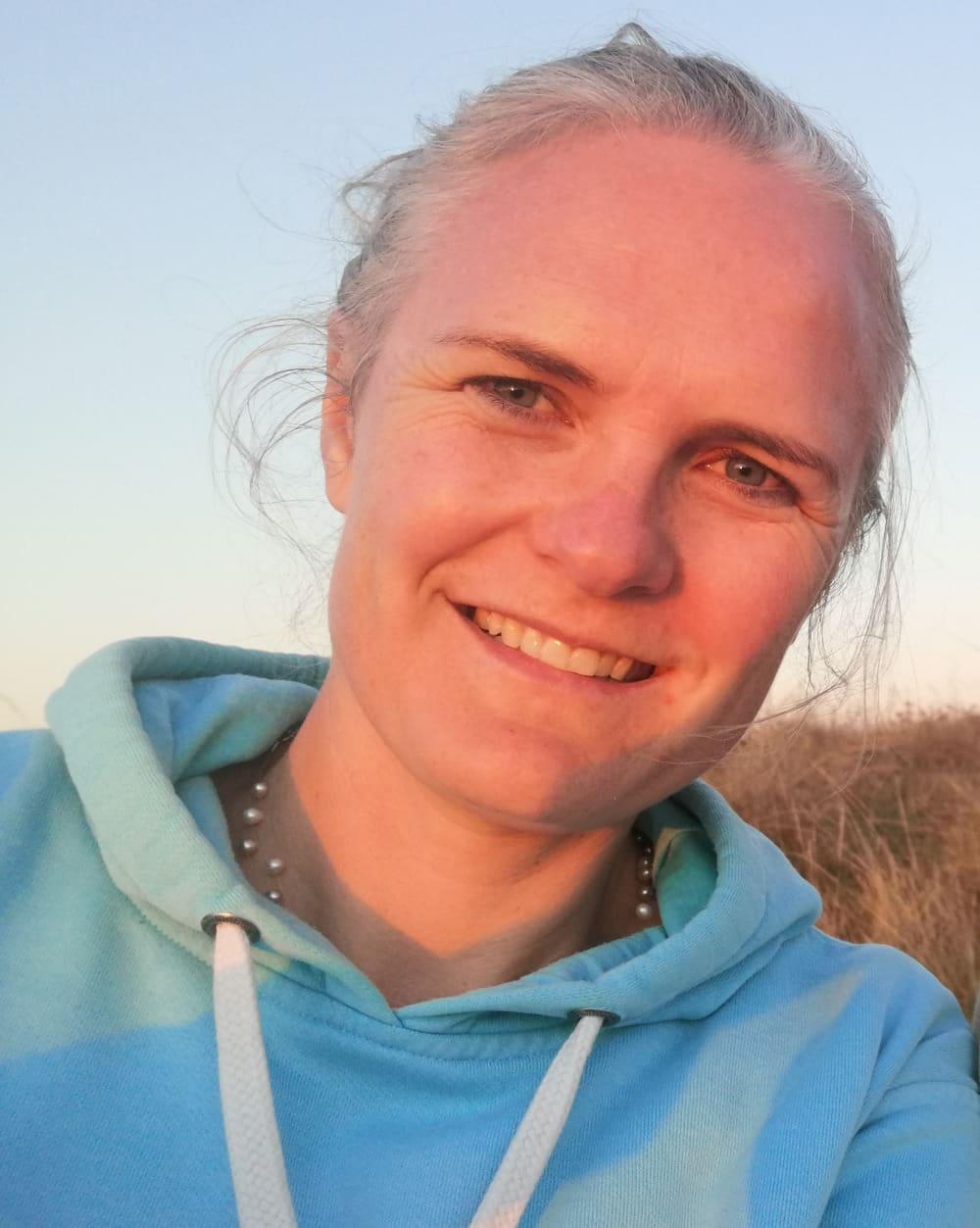 Michelle(right) gave an introduction and then was followed by oral presentations. (Above, l-r: Joshua Tsamba, Michelle Greve, Laura Fernadez-Winzer, Stephni van der Merwe, Nita Pallett) (Photo Credit: Michelle Greve)
Michelle(right) gave an introduction and then was followed by oral presentations. (Above, l-r: Joshua Tsamba, Michelle Greve, Laura Fernadez-Winzer, Stephni van der Merwe, Nita Pallett) (Photo Credit: Michelle Greve) Another student Janine Schoombie of Peter le Roux of University of Pretoria presented in the ad hoc session chaired by Christel Hansen. They only arrived on 30 November after the Prince Edward Island scientific voyage. “Studies of wind, plants and seabirds on Marion Island”. (
Another student Janine Schoombie of Peter le Roux of University of Pretoria presented in the ad hoc session chaired by Christel Hansen. They only arrived on 30 November after the Prince Edward Island scientific voyage. “Studies of wind, plants and seabirds on Marion Island”. (



